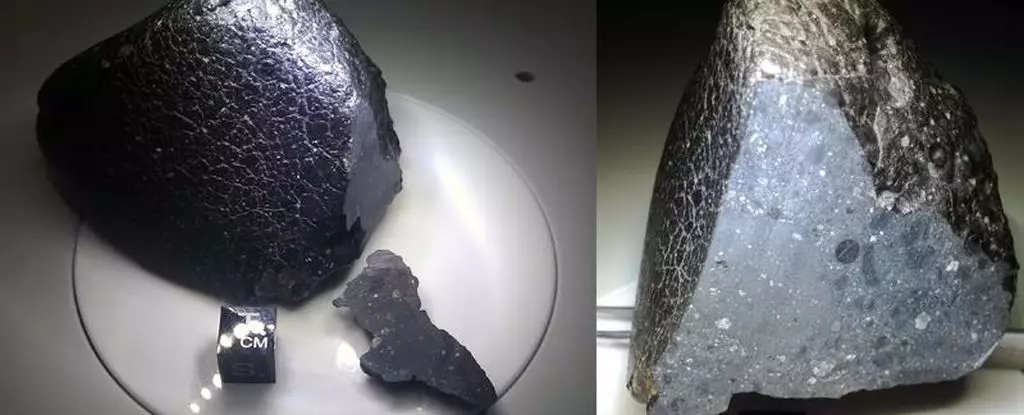Recent findings indicate that the Martian surface was not always the barren desert we perceive today. Evidence suggests that Mars harbored liquid water as early as 4.45 billion years ago, shortly after the planet coalesced from the primordial dust of the Sun’s formation. This revelation originates from the analysis of a minuscule zircon grain, measuring less than a strand of human hair, which preserved minerals indicative of aqueous environments. These findings usher us into a deeper understanding of the conditions on early Mars and how they may parallel those on Earth, raising intriguing questions about the potential for life on the Red Planet.
The existence of water, particularly at elevated temperatures akin to hydrothermal vents or hot springs, signifies a dynamic and potentially habitable environment. The implications are profound, suggesting that the conditions conducive to life did not just arise on Earth but may have equally flourished elsewhere within our Solar System. According to geologist Aaron Cavosie from Curtin University, this shared history amplifies our understanding of planetary evolution during the Noachian epoch (4.1 to 3.7 billion years ago), a period ripe with geological evidence of life on Earth.
The Puzzle of Martian Water History
Understanding Mars’ water history is a complex endeavor, primarily hindered by the distance and the limited scope of our explorations. Nevertheless, the cosmos has been generous in its gifts, occasionally delivering Martian meteorites to Earth for analysis. A notable specimen is NWA 7034, famously dubbed ‘Black Beauty’, which found its beginnings in the Sahara Desert in 2011. This meteorite, a composite of volcanic breccia—essentially rock containing fragments of other rocks—serves as an invaluable resource for geologists seeking insight into the Martian environment.
Within NWA 7034 lie zircon crystals, which have garnered significant attention for their potential to unlock secrets about Mars’ early conditions. Recent studies conducted by Curtin University scientists assert that some of these zircons contained mineral traces effectively narrating the environmental setting in which they formed. Utilizing advanced nanoscale microscopy techniques, the researchers uncovered significant layers of elements like iron, aluminum, and sodium, which are rarely found in zircon. This indicates the presence of hot aqueous fluids during their formation, suggesting a dynamic interplay between geology and hydrology on ancient Mars.
In a groundbreaking revelation, researchers highlighted parallels between Martian and Earthly zircon samples. Just as Earth hosts regions such as the Olympic Dam—renowned for its magmatic-hydrothermal systems—Mars may have shared a similar geological narrative. The conditions necessary for the growth of these zircons during intense magmatic activity indicate that hot water could profile the early Martian crust. Cavosie draws a vivid comparison, noting the significance of understanding these layered structures in revealing how both planets potentially harbored liquid water early in their histories.
While the exact temperatures of Martian water remain speculative, estimates range from several hundred degrees Celsius to beyond 500 °C. Nonetheless, this heat would have been tied to the planet’s volcanic past, suggesting contrived environments that were moist and possibly teeming with life-creating factors. Cavosie echoes this intrigue, albeit cautiously, as he discusses the continuum between potential surface water and deeper, hydrothermal reserves; the mysteries surrounding these ancient reservoirs urge for further investigation.
As the scientific community delves deeper into the implications of these findings, exciting questions arise regarding Mars’ hydrothermal history. Despite our current knowledge, there remains an air of mystery – was this hydrothermal activity a product of the planet’s intrinsic dynamics or a consequence of cataclysmic asteroid impacts? The formulation of hydrothermal systems on Mars presents a tantalizing possibility; could remnants of these systems hold clues to ancient microbial life?
NWA 7034’s zircon reveals more than just geological history; it is a testament to the survival complexities and resilience of Martian material. From its formation in a fiery, wet milieu to its violent expulsion into space and eventual descent to Earth, this zircon embodies the intricate narrative of Mars’ past. According to Cavosie, this remarkable stone survived geological upheavals, asserting itself as a significant relic of our cosmic heritage—one that landed in the Sahara, fostering scientific curiosity and hope for future explorations.
As we stand on the precipice of unveiling Mars’ long-hidden secrets, the discovery of early water on the planet opens avenues for not only understanding its geological history but also forms crucial foundations for the search for extraterrestrial life. Mars may have once been a canvas for life’s beginnings, paralleling Earth’s own story—a compelling narrative poised for scientific enlightenment and exploration.



Leave a Reply